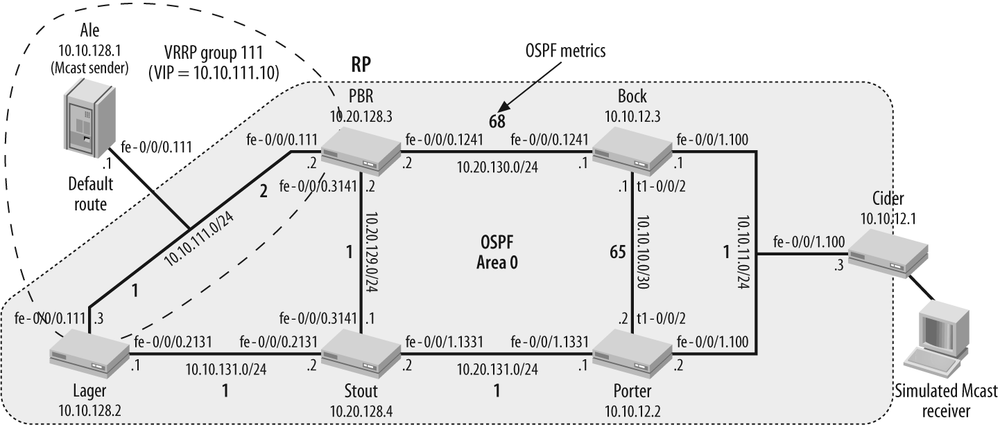PIM Sparse Mode: Static RP
At this stage, you should have an extensive grounding in IP multicast theory in general, and in PIM sparse mode operation in particular. This knowledge is soon to bear fruit as you configure and validate the operation of PIM sparse mode using a statically defined RP with Juniper Networksâ routers.
The initial PIM sparse mode deployment goals are as follows:
Configure router
PBRas an RP for the entire multicast address range.Configure all other routers to use
PBRas the domainâs RP without using BSR or auto-RP.Configure
Ciderto function as a multicast receiver for group 225.1.1.1.Use
Aleas a multicast source to generate traffic to group 225.1.1.1.Verify RPT join and subsequent traffic-driven switches to SPT.
Figure 10-13 details the portion of Beer-Coâs network that is to be enabled for multicast support. The figure also highlights key aspects of the IGP routing infrastructure now in place.

Figure 10-13. Beer-Coâs multicast topology
Details to note in Figure 10-13 include the following:
The default OSPF bandwidth scaling factor is in effect with the exception of
PBRâs end of thePBRâLagerlink (asymmetric) and thePBRâBocklink. The metric for these links has been altered in an effort to favor theLagerâStoutâPorterpath for communications betweenAleandCider.Router
Aleis configured to emulate a host sending to a multicast group.Ale ...
Get JUNOS Enterprise Routing now with the O’Reilly learning platform.
O’Reilly members experience books, live events, courses curated by job role, and more from O’Reilly and nearly 200 top publishers.

